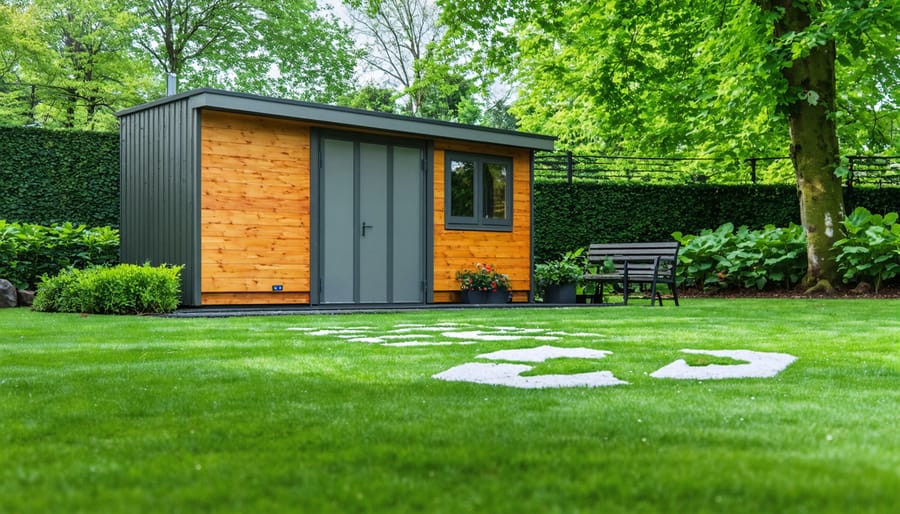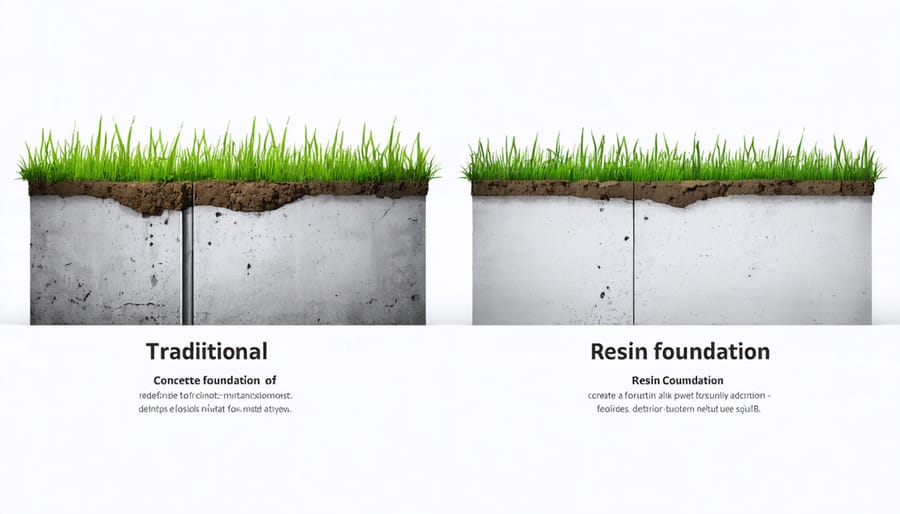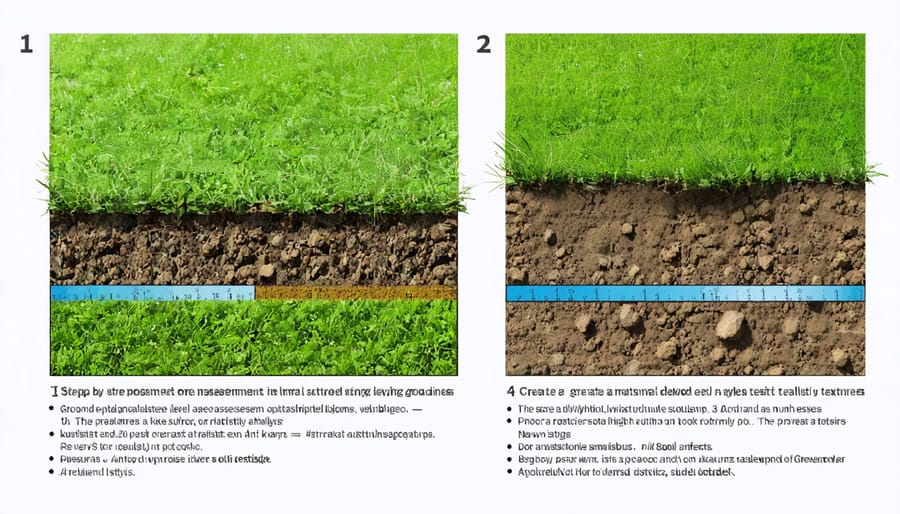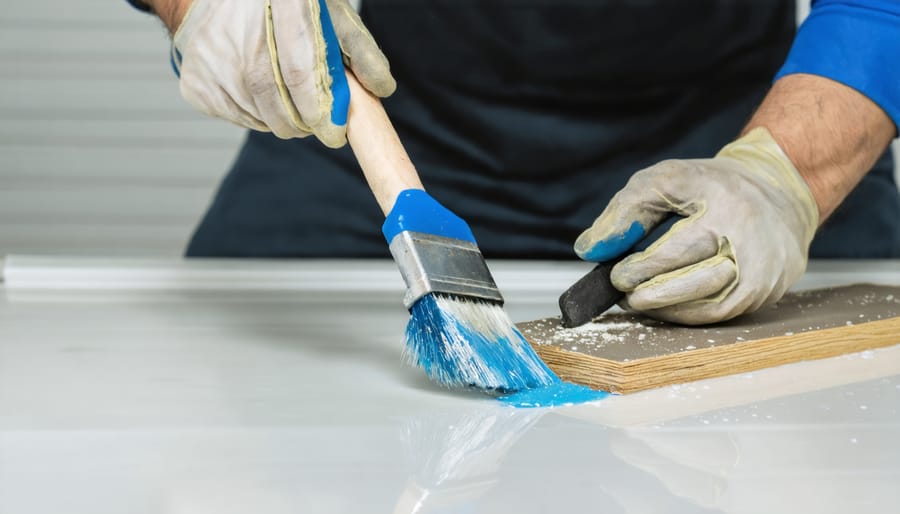Build a Resin Shed Foundation That Will Last Decades (Without Harming the Planet)

Transform your outdoor storage solution with a resin shed foundation that combines durability, sustainability, and ease of installation. Modern eco-friendly foundation methods have revolutionized how we approach shed bases, offering superior moisture protection and load-bearing capacity while minimizing environmental impact. These innovative foundations eliminate the need for extensive groundwork, reduce construction waste, and provide a perfectly level surface that extends your shed’s lifespan. Whether you’re storing garden equipment, creating a workshop, or establishing a backyard retreat, a properly installed resin foundation ensures stability in all weather conditions while maintaining the natural drainage patterns of your property. Best of all, these foundations can be installed in a single weekend, requiring minimal tools and expertise, making them an ideal choice for both DIY enthusiasts and sustainability-conscious homeowners.
Why Choose a Resin Shed Foundation?

Environmental Benefits
Resin shed foundations offer several environmental advantages that make them a sustainable choice for eco-conscious homeowners. Unlike traditional concrete foundations, resin bases are often made from recycled materials, reducing landfill waste and the demand for new raw materials. The manufacturing process of resin foundations typically requires less energy compared to concrete production, resulting in a lower carbon footprint.
These foundations are also incredibly durable, with a lifespan that can exceed 25 years when properly maintained. This longevity means fewer replacements and less waste over time. Since resin foundations are lightweight and don’t require heavy machinery for installation, they minimize soil disruption and reduce the environmental impact during setup.
Additionally, resin foundations feature excellent drainage properties, helping to manage rainwater naturally and prevent water pooling. This characteristic supports local groundwater systems and reduces the strain on municipal drainage infrastructure. When it’s finally time to replace your foundation, resin materials can often be recycled again, creating a sustainable cycle of use.
Long-Term Cost Savings
Installing a resin shed foundation proves to be a smart financial investment in the long run. Unlike traditional concrete bases that may crack or wooden foundations that can rot, resin foundations typically last 15-20 years with minimal maintenance. This durability translates into significant cost savings over time, as you won’t need frequent repairs or replacements.
The material’s resistance to moisture, frost, and UV rays means you won’t face common issues like warping, splitting, or deterioration. This protection extends to your shed’s floor and contents, preventing expensive damage to stored items. Many homeowners report saving hundreds of dollars annually by avoiding moisture-related repairs and replacement of damaged storage items.
Additionally, the easy-to-clean nature of resin means you’ll spend less on cleaning products and maintenance supplies. A simple wash with water and mild soap is usually all that’s needed to keep the foundation looking fresh and functioning properly. This low-maintenance aspect, combined with the material’s longevity, makes resin foundations a cost-effective choice for long-term shed stability.
Planning Your Resin Foundation Project
Site Assessment
Before installing your resin shed foundation, a thorough site assessment is crucial for long-term stability and performance. Start by examining the ground’s slope and natural drainage patterns. The ideal location should be level or have minimal slope, with water naturally flowing away from the intended shed area.
Check the soil type by digging a small test hole. Sandy or gravelly soil typically provides good drainage, while clay soil may require additional preparation to prevent water pooling. If you’re unsure about your soil composition, conducting a simple soil test can provide valuable insights.
Look for signs of existing drainage issues like standing water, soggy patches, or erosion marks. These areas should be addressed before installation, possibly by adding drainage solutions or selecting a different location. Also, consider the surrounding landscape – trees, shrubs, and their root systems can impact your foundation’s stability.
Measure the space carefully, ensuring adequate clearance on all sides for maintenance and proper airflow. Remember to check local building codes and obtain necessary permits, as some areas have specific requirements for shed foundations. If your site presents challenging conditions, consulting a landscape professional can help develop effective solutions.

Material Selection
When selecting materials for your resin shed foundation, prioritizing sustainable building materials ensures both environmental responsibility and long-term durability. Look for recycled composite materials that combine post-consumer plastics with natural fibers, offering excellent strength while reducing environmental impact. These eco-friendly options typically feature UV stabilizers to prevent degradation and are resistant to moisture, insects, and decay.
Consider materials certified by recognized environmental organizations, which guarantee they meet specific sustainability standards. High-density polyethylene (HDPE) recycled from post-consumer waste is an excellent choice, providing exceptional durability while giving plastic waste a second life. Many manufacturers now offer foundations made from up to 100% recycled content.
For optimal performance, select materials rated for ground contact and designed to handle your local climate conditions. Look for products with good thermal stability to prevent warping in extreme temperatures. The best options will include proper drainage features and air circulation capabilities to prevent moisture buildup.
Remember to check the warranty period – quality sustainable materials typically come with extended guarantees, reflecting their durability and manufacturer confidence. Choose materials that don’t require chemical treatments or preservatives, maintaining their eco-friendly status throughout their lifecycle.
Installation Best Practices
Ground Preparation
Before installing your resin shed foundation, proper ground preparation techniques are essential for long-term stability and sustainability. Start by clearing the area of all vegetation, rocks, and debris. Remove grass and weeds completely, including their root systems, to prevent future growth that could compromise your foundation.
Using a level, check the ground’s slope and mark any areas that need adjustment. Aim for a slight grade (about 1 inch per 8 feet) away from where the shed will stand to ensure proper water drainage. This natural slope helps prevent water pooling around your foundation, which could lead to structural issues over time.
Compact the soil thoroughly using a plate compactor or hand tamper. Pay special attention to any filled areas, as these are more likely to settle. For best results, compact the soil in layers, adding about 2-3 inches at a time. This methodical approach creates a stable base that will support your resin shed for years to come.
Consider laying a weed barrier fabric beneath your foundation area. This eco-friendly solution prevents unwanted plant growth while allowing proper water drainage. Top the fabric with a 2-inch layer of crushed stone or gravel, leveling it carefully to create a uniform surface for your foundation components.

Resin Application
The resin application process requires careful attention to detail for the best results. Start by thoroughly cleaning the base area, removing any debris, vegetation, or loose materials. Next, mix the resin components according to the manufacturer’s instructions – typically a two-part system combining resin and hardener.
Using a roller or brush, apply a thin primer coat to ensure proper adhesion. Once the primer has slightly dried (usually 30-60 minutes), pour the main resin mixture onto the foundation area. Spread it evenly using a trowel or squeegee, working in small sections to maintain control over the application.
For added stability, consider incorporating a layer of aggregate while the resin is still wet. Scatter the stones evenly across the surface, then gently press them into the resin using a roller. This creates a textured, non-slip surface that’s perfect for shed foundations.
Allow the resin to cure completely – typically 24-48 hours, depending on weather conditions. Avoid walking on the surface during this time. For best results, apply the resin on a dry day when temperatures are between 50-70°F (10-21°C).
Pro tip: Always wear protective gear, including gloves and eye protection, when working with resin. If you’re covering a large area, work with a helper to ensure even application before the resin starts to set.
Maintenance and Care
Regular maintenance of your resin shed foundation ensures its longevity while keeping your storage solution environmentally sound. Start with a monthly inspection of the foundation’s surface, checking for any cracks, chips, or signs of wear. Clean the surface using eco-friendly soap and water, avoiding harsh chemicals that could harm your garden or groundwater.
During seasonal changes, pay special attention to water drainage around the foundation. Clear any debris from drainage channels and ensure water flows away from the structure. In autumn, remove fallen leaves promptly to prevent staining and potential slip hazards.
If you notice any small cracks, address them immediately using eco-friendly sealants specifically designed for resin materials. This prevents water infiltration and maintains the foundation’s structural integrity. For areas experiencing frequent temperature fluctuations, apply a UV-protective coating annually to prevent sun damage and maintain the resin’s durability.
Keep the surrounding area well-maintained by trimming vegetation that could impact the foundation’s stability. Avoid using salt-based ice melters in winter, as these can deteriorate the resin material. Instead, opt for sand or pet-friendly ice melt alternatives.
Remember to check the leveling of your foundation annually using a basic spirit level. If you notice any slight shifting, minor adjustments can prevent bigger issues down the line. With proper care, your resin shed foundation can maintain its strength and eco-friendly benefits for many years to come.
Resin shed foundations represent a significant step forward in sustainable construction practices while offering practical benefits for homeowners. These innovative foundations combine durability with eco-consciousness, using recycled materials that reduce environmental impact without compromising structural integrity. Their lightweight nature minimizes ground disturbance during installation, while their impressive load-bearing capacity ensures long-lasting stability for your storage solution.
The benefits extend beyond environmental considerations. Homeowners appreciate the quick installation process, minimal maintenance requirements, and excellent drainage properties that protect their investments. The cost-effectiveness of resin foundations, coupled with their long lifespan, makes them a smart choice for budget-conscious consumers looking to make sustainable choices.
As we move toward more environmentally responsible building practices, resin shed foundations stand out as a prime example of how modern materials can meet both practical needs and ecological goals. Their resistance to rot, pests, and weather damage ensures they’ll continue serving homeowners well into the future, making them an excellent choice for those seeking a reliable, sustainable foundation solution for their outdoor storage needs.

